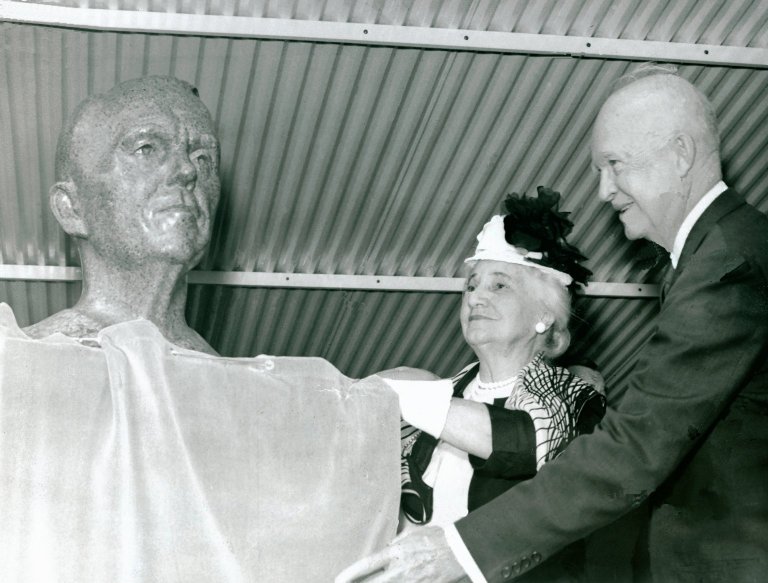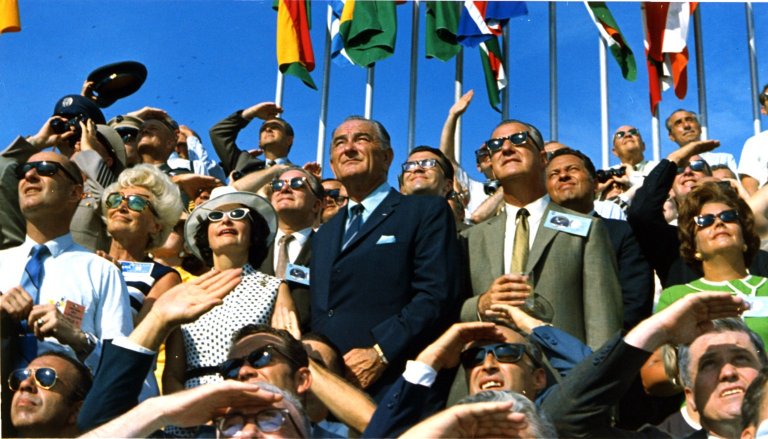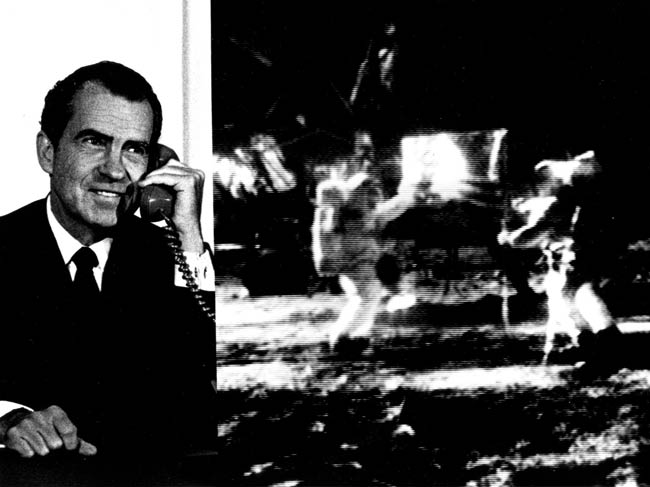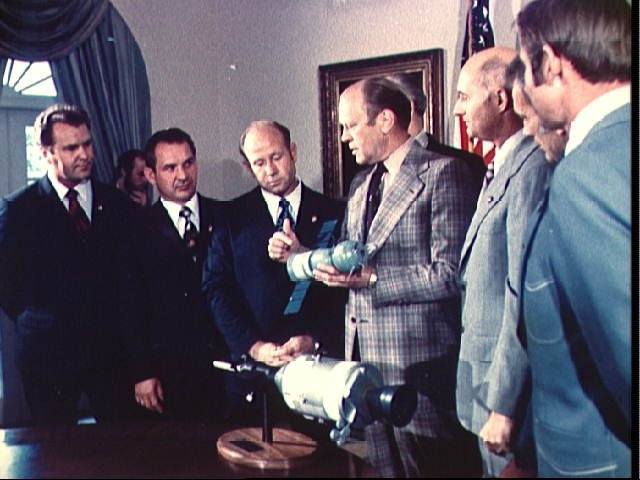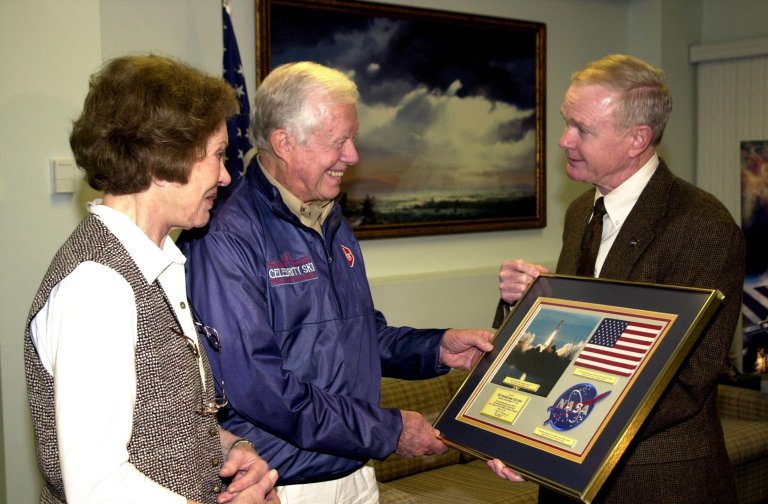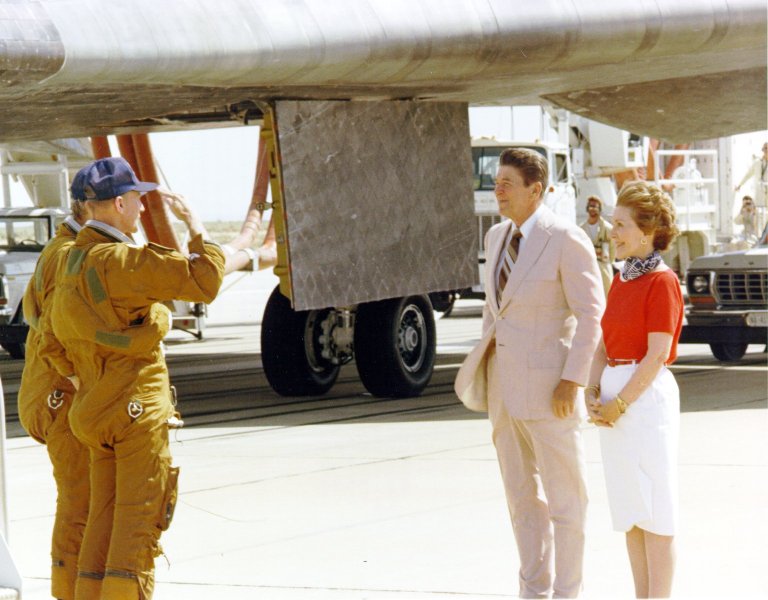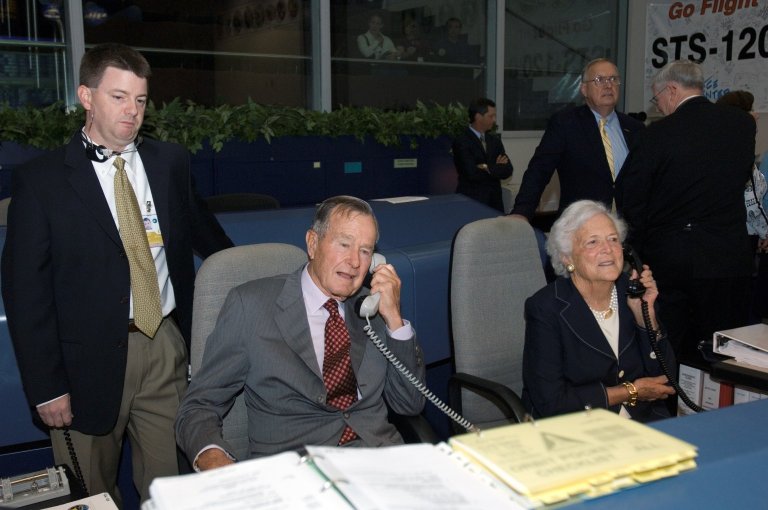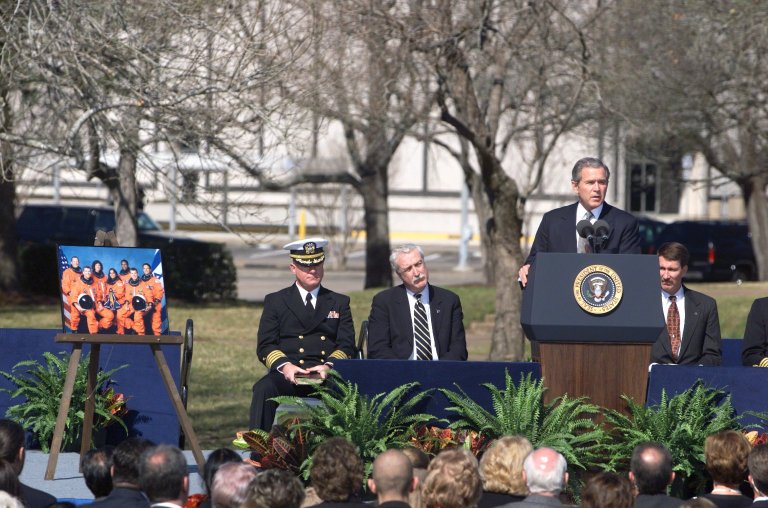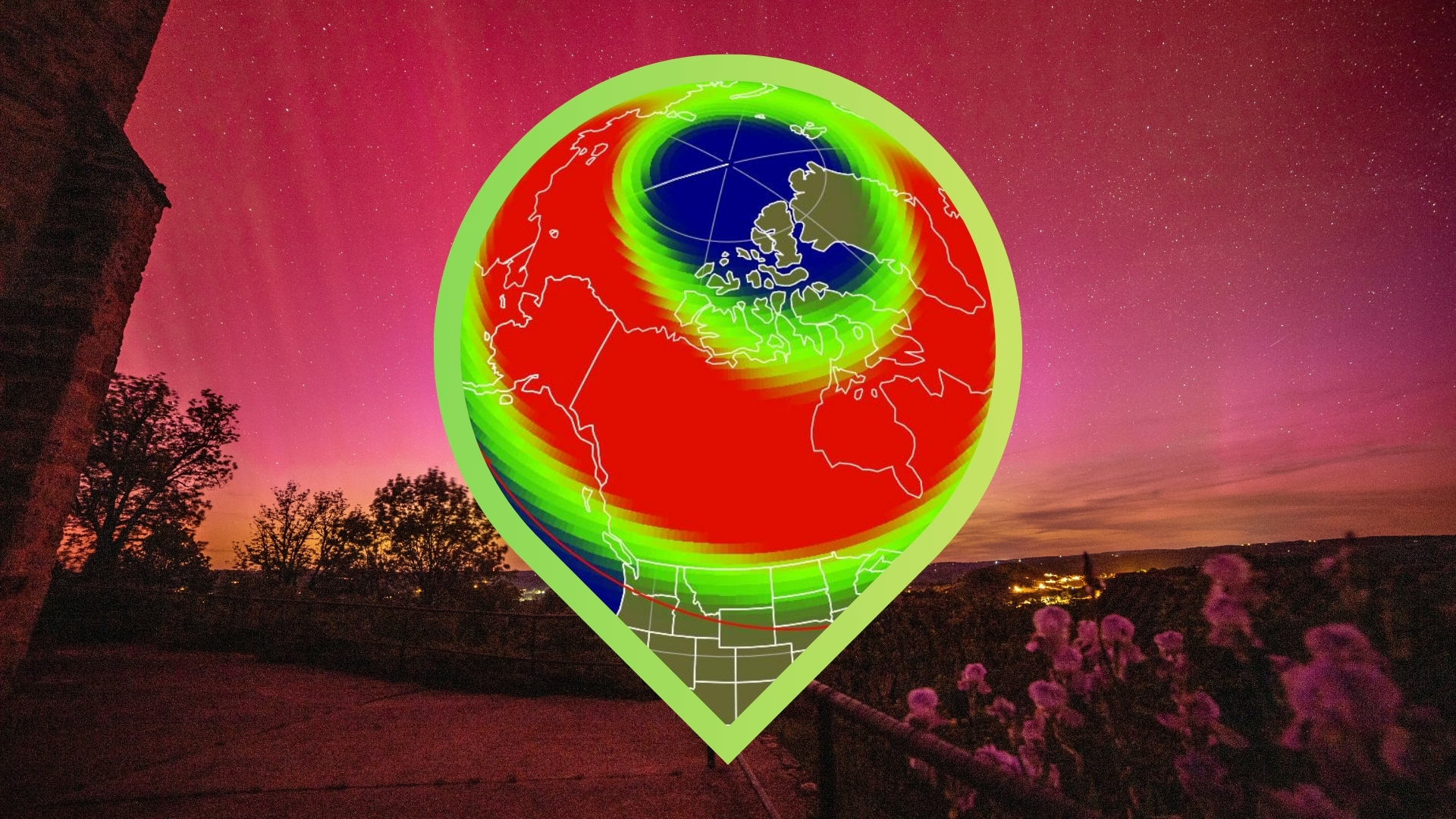Presidential Visions for Space Exploration: From Ike to Biden
America's Space Commanders-in-Chief
On May 25, 1961, President John F. Kennedy announced a bold new plan for NASA and the nation: To send an American to the moon, and to return him safely, by the close of the decade.
Kennedy's speech, which came just six weeks after cosmonaut Yuri Gagarin became the first person to reach outer space, had a huge impact on NASA and space exploration. It jump-started the agency's Apollo program, a full-bore race to the moon that succeeded on July 20, 1969, when Neil Armstrong's boot crunched down into the gray lunar dirt.
Kennedy, of course, isn't the only leader who had a vision for the nation's space program. Since NASA's founding in 1958, every president from Eisenhower to Obama has left his mark. Take a look at how each U.S. commander-in-chief helped shape and steer American activities in space.
Editor's note: This story was updated on Jan. 20, 2021.
Dwight Eisenhower (in office 1953-1961)
President Dwight Eisenhower was president when the Soviet Union launched the world's first artificial satellite, Sputnik I, in October 1957. This seminal event shocked the United States, started the Cold War space race between the two superpowers and helped lead to the creation of NASA in 1958.
However, Eisenhower didn't get too swept up the short-term goals of the space race. He valued the measured development of unmanned, scientific missions that could have big commercial or military payoffs down the road.
For example, even before Sputnik, Eisenhower had authorized a ballistic missile and scientific satellite program to be developed as part of the International Geophysical Year project of 1957-58. The United States' first successful satellite, Explorer I, blasted off Jan. 31, 1958. By 1960, the nation had launched and retrieved film from a spy satellite called Discoverer 14.
John F. Kennedy (1961-1963)
President John F. Kennedy effectively charted NASA's course for the rest of the 1960s with his famous speech before Congress on May 25, 1961.
The Soviets had launched Sputnik I in 1957, and cosmonaut Yuri Gagarin had become the first person in space on April 12, 1961, just six weeks before the speech. On top of those space race defeats, the U.S. plan to topple the Soviet-backed regime of Cuban leader Fidel Castro — the so-called Bay of Pigs invasion — had failed miserably in April 1961.
Kennedy and his advisers figured they needed a way to beat the Soviets, to re-establish American prestige and demonstrate the country's international leadership. So they came up with an ambitious plan to land an astronaut on the moon by the end of the 1960s, which Kennedy laid out in his speech.
The Apollo program roared to life as a result, and NASA embarked on a crash mission to put a man on the moon. The agency succeeded, of course, in 1969. By the end of Apollo in 1972, the United States had spent about $25 billion on the program — well over $100 billion in today's dollars.
Lyndon Johnson (1963-1969)
President Lyndon Johnson was instrumental in both ratcheting up and scaling back the United States' space race with the Soviet Union.
As Senate majority leader in the late 1950s, he had helped raise the alarm regarding Sputnik, stressing that the satellite launch had intiated a race for "control of space." Later, Kennedy put Johnson, his vice president, in personal charge of the nation's space program. When Johnson became commander-in-chief after Kennedy's assassination, he continued to support the goals of the Apollo program.
However, the high costs of Johnson's Great Society programs and the Vietnam War forced the president to cut NASA's budget. To avoid ceding control of space to the Soviets (as some historians have argued), his administration proposed a treaty that would outlaw nuclear weapons in space and bar national sovereignty over celestial objects.
The result was 1967's Outer Space Treaty (OST), which forms the basis of international space law to this day. The OST has been ratified by all of the major space-faring nations, including Russia and its forerunner, the Soviet Union.
Richard Nixon (1969-1974)
All of NASA's manned moon landings occurred during President Richard Nixon's presidency. However, the wheels of the Apollo program had been set in motion during the Kennedy and Johnson years. So Nixon's most lasting mark on American space activities is probably the space shuttle program.
By the late 1960s, NASA managers had begun drawing up ambitious plans to set up a manned moon base by 1980 and to send astronauts to Mars by 1983. Nixon nixed these ideas, however. In 1972, he approved the development of the space shuttle, which would be NASA's workhorse space vehicle for three decades, starting in 1981.
Also in 1972, Nixon signed off on a five-year cooperative program between NASA and the Soviet space agency. This deal resulted in 1975's Apollo-Soyuz Test Project, a joint space mission between the two superpowers.
Gerald Ford (1974-1977)
President Gerald Ford was in office for less than 2 1/2 years, so he didn't have much time to shape American space policy. He did, however, continue to support development of the space shuttle program, despite calls in some quarters to shelve it during the tough economic times of the mid-1970s.
Ford also signed off on the creation of the Office of Science and Technology Policy (OSTP) in 1976. The OSTP advises the president about how science and technology may affect domestic and international affairs.
Breaking space news, the latest updates on rocket launches, skywatching events and more!
Jimmy Carter (1977-1981)
President Jimmy Carter didn't articulate big, ambitious spaceflight goals during his one term in office. However, his administration did break some ground in the area of military space policy.
While Carter wanted to restrict the use of space weapons, he signed a 1978 directive that stressed the importance of space systems to national survival, as well as the administration's willingness to keep developing an antisatellite capability.
The 1978 document helped establish a key plank of American space policy: the right of self-defense in space. And it helped the United States military view space as an arena in which wars could be fought, not just a place to put hardware that could coordinate and enhance actions on the ground.
Ronald Reagan (1981-1989)
President Ronald Reagan offered strong support for NASA's space shuttle program. After the shuttle Challenger exploded in 1986, he delivered a moving speech to the nation, insisting that the tragedy wouldn't halt America's drive to explore space. "The future doesn't belong to the fainthearted; it belongs to the brave," he said.
Consistent with his belief in the power of the free market, Reagan wanted to increase and streamline private-sector involvement in space. He issued a policy statement to that effect in 1982. And two years later, his administration set up the Office of Commercial Space Transportation, which to this day regulates commercial launch and re-entry operations.
Reagan also believed strongly in ramping up the nation's space-defense capabilities. In 1983, he proposed the ambitious Strategic Defense Initiative (SDI), which would have used a network of missiles and lasers in space and on the ground to protect the United States against nuclear ballistic missile attacks.
Many observers at the time viewed SDI as unrealistic, famously branding the program "Star Wars" to emphasize its supposed sci-fi nature. SDI was never fully developed or deployed, though pieces of it have helped pave the way for some current missile-defense technology and strategies.
George H. W. Bush (1989-1993)
President George H.W. Bush (the first Bush in office) supported space development and exploration, ordering a bump in NASA's budget in tough economic times. His administration also commissioned a report on the future of NASA, which came to be known as the Augustine report when it was published in 1990.
Bush had big dreams for the American space program. On July 20, 1989 — the 20th anniversary of the first manned moon landing — he announced a bold plan called the Space Exploration Initiative. SEI called for the construction of a space station called Freedom, an eventual permanent presence on the moon and, by 2019, a manned mission to Mars.
These ambitious goals were estimated to cost at least $500 billion over the ensuing 20 to 30 years. Many in Congress balked at the high price tag, and the initiative was never implemented.
Bill Clinton (1993-2001)
Construction of the International Space Station began in late 1998, in the middle of President Bill Clinton's second term as president. And in 1996, he announced a new national space policy.
According to the policy, the United States' chief space goals going forward were to "enhance knowledge of the Earth, the solar system and the universe through human and robotic exploration" and to "strengthen and maintain the national security of the United States."
This latter sentiment was consistent with other space policy statements from previous administrations. However, some scholars argue that the 1996 document opened the door to the development of space weapons by the United States, though the policy states that any potential "control" actions would be "consistent with treaty obligations."
George W. Bush (2001-2009)
President George W. Bush issued his own space policy statement in 2006, which further encouraged private enterprise in space. It also asserted national self-defense rights more aggressively than previous administrations had, claiming that the United States can deny any hostile party access to space if it so chooses.
Bush also dramatically shaped NASA's direction and future, laying out a new Vision for Space Exploration in 2004. The Vision was a bold plan, calling for a manned return to the moon by 2020 to help prepare for future human trips to Mars and beyond. It also instructed NASA to complete the International Space Station and retire the space shuttle fleet by 2010.
To help achieve these goals, NASA embarked upon the Constellation program, which sought to develop a new crewed spacecraft called Orion, a lunar lander named Altair and two new rockets: the Ares I for manned missions and the Ares V for cargo. But it was not to be; Bush's successor, President Barack Obama, axed Constellation in 2010.

Michael Wall is a Senior Space Writer with Space.com and joined the team in 2010. He primarily covers exoplanets, spaceflight and military space, but has been known to dabble in the space art beat. His book about the search for alien life, "Out There," was published on Nov. 13, 2018. Before becoming a science writer, Michael worked as a herpetologist and wildlife biologist. He has a Ph.D. in evolutionary biology from the University of Sydney, Australia, a bachelor's degree from the University of Arizona, and a graduate certificate in science writing from the University of California, Santa Cruz. To find out what his latest project is, you can follow Michael on Twitter.

